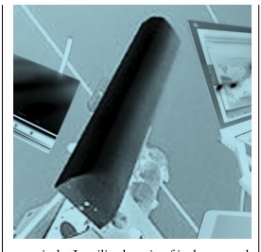Infrastructure Management - Best practices in resource planning and optimisation

-
Some measures for the optimal utilisation of these resources include streamlining telecom tower design and making them lightweight, angular or tubular, using high grade concrete monopoles, using phase change material to construct shelters and intelligent monitoring.
Alternative power sources such as solar power, wind power and biofuels can also be used to ensure optimum utilisation of resources. For example, while wind power is ideal for coastal areas, solar energy and biofuels offer benefits such as low maintenance, high lifetime and reduced dependence on fossil fuels.
For sites situated in urban areas, a viable solution is placing a micro BTS atop a streetlight pole or on a commercial signage. The former is ideal for situations where space is a constraint and the latter provides an aesthetic solution in situations where normal solutions are not accepted by municipal bodies.
Infrastructure management and thirdparty outsourcing of site equipment enable tower companies to focus on increasing their tenancy ratio by sharing locational information with prospective tenants. This ensures faster rollout of services, thereby cutting the time taken by an organisation to set up operations in a new region.
The infrastructure management model should be capable of achieving zero breakdowns and defects, optimal life and availability of telecom equipment, low machine life-cycle costs, and maximum productivity of resources.
For instance, Idea Cellular did not use managed services or a managed capacitybased model for network management in any circle. It utilised a mix of in-house and outsourced resources for managing its passive infrastructure while the active infrastructure was managed in-house.
One of the company's circles was completely outsourced. The company hoped to outsource all non-value-adding, repetitive and routine activities, expand the engineer's role to include more technical and value-adding activities, convert all technicians' tasks into service contracts, and create per site service contracts to ensure that the earning potential is inbuilt and synchronised with the growth of the network.
The outsourced model was started on a trial basis in three locations under three different firms headed by three technicians. The success of these trials resulted in network infrastructure O&M being outsourced to network operations centre (NoC) firms in 2000. This helped reduce telecom equipment implementation costs to less than one-fifth.
The best practices in infrastructure resource planning include identifying the input, output and stakeholders of every activity, and adopting the following fivepronged approach to each of the identified activities: process, competency, compliance, documentation and ownership, and identifying the volume of tasks.
While there is ample scope for infrastructure sharing, certain challenges remain. Site acquisition continues to be the single biggest challenge faced by the incumbents and new carriers. Then, the amount spent on energy per site is still calculated on an actual basis and certain inventory-related issues continue to plague the telecom space. However, efforts are on to cap the amount spent on energy in order to give operators predictable cash outflows. And new site designs are being contemplated, based on expected tenancy at the site.
In addition, the long payback period and high risk associated with the industry are major deterrents for new players. The fact that the industry is already heading towards a phase of consolidation will ensure that the weaker players exit at little or no premium with an emphasis on initial capital recovery.
Conversely, the key drivers for infrastructure sharing include the potential for telecom services in rural and semi-urban areas, the launch of cost-effective 3G services by reusing 3G sites and rolling out common infrastructure, and the reduction in costs of setting up towers by using lighter designs and sharing of antennas and backhaul.
The best practices in infrastructure management can be summed up as: cost efficient design of telecom towers, remote monitoring system (to reduce trucking expenses) and the use of renewable energy sources such as solar and wind to feed the site. Also, practices such as outsourcing shared infrastructure and sharing the required fees, which enables operators to enjoy the benefits of shared capital expenditure from the very first day of sharing infrastructure, are also viable.
All of these enable cost efficiency through optimisation of processes, risk sharing via service level agreements, ability to set up remote NoCs, shorter delivery period, and creation of a vendor and technology-agnostic pool.
Inder Sharma, managing director, Nutek; Jacob Mathew, assistant vicepresident, projects, Idea Cellular; and Sharat Chandra, president and COO, strategy and new technologies, GTL
- Most Viewed
- Most Rated
- Most Shared
- Related Articles
- Manufacturing Hub: India emerges as a ke...
- TRAI performance indicator report for Se...
- Prashant Singhal, partner, telecom indus...
- 2G spectrum scam: continuing controversy
- An Eventful Year: Telecom highlights of ...
- Telecom Round Table: TRAI’s spectrum p...
- Manufacturing Hub: TRAI recommends indig...
- Linking Up: ITIL to merge with Ascend
- High Speed VAS - Killer applications w...
- Bharti Airtel seals deal with Zain - Zai...






